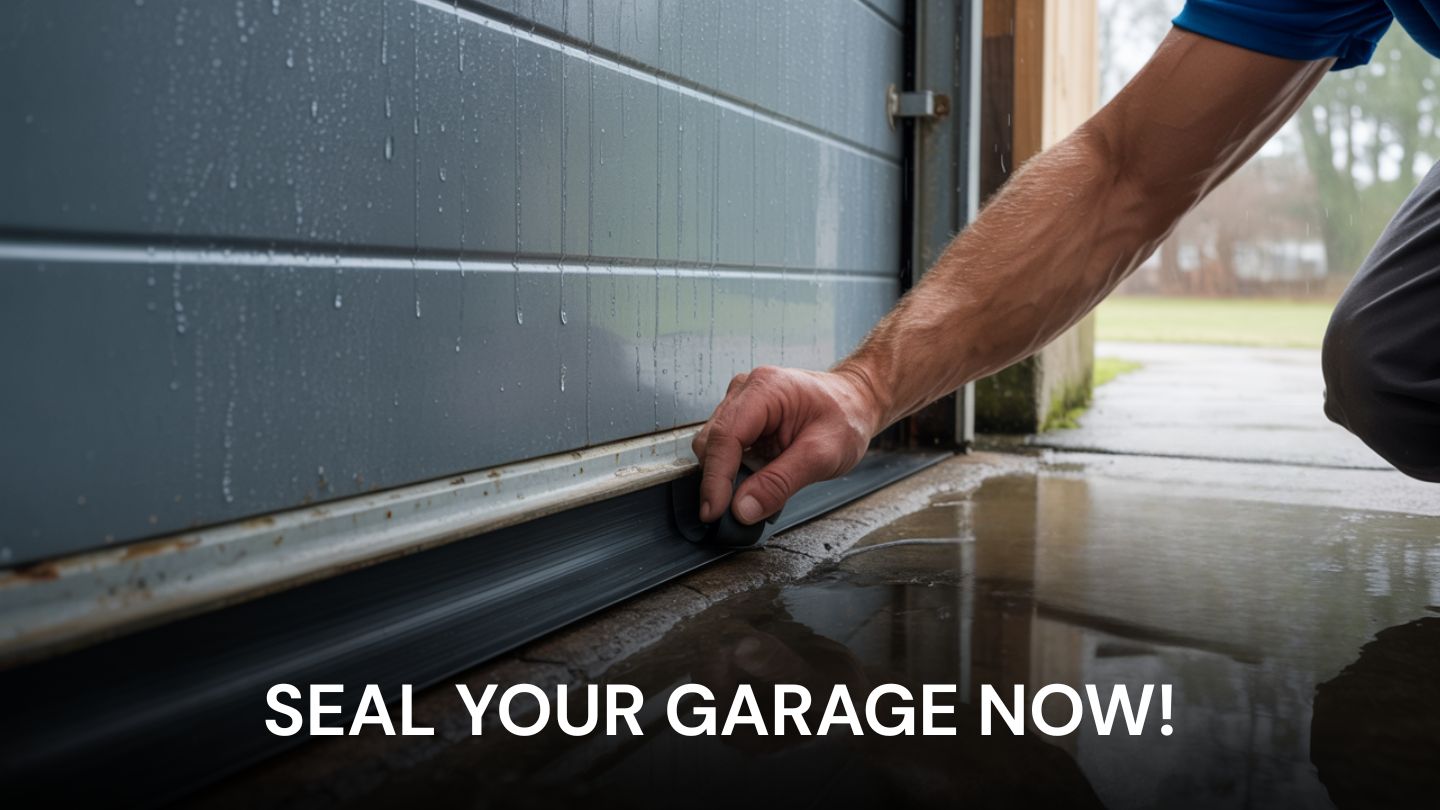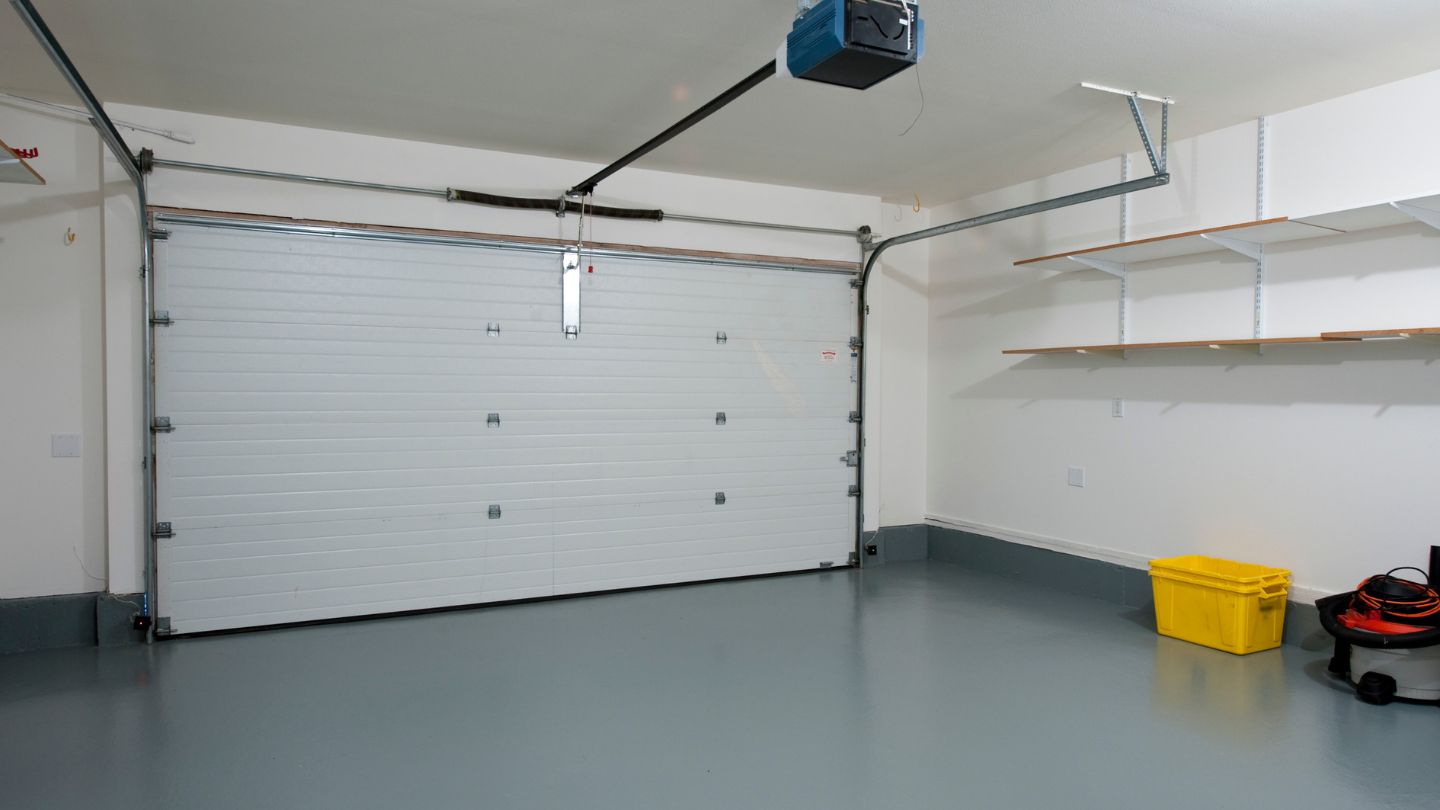
Need to weatherproof your garage door for the winter? This blog will provide effective methods and ways to weatherproof a garage door to keep your garage warm and dry by sealing gaps, adding insulation, and installing weatherstripping.
Installing proper insulation can keep your garage warmer by up to 12 degrees Fahrenheit, significantly enhancing energy efficiency. Whether you have metal or wooden garage doors, adding insulation can make a noticeable difference.
Read more: What to Expect During the Garage Door Installation Process: A Helpful Guide
Garage door insulation kits are designed for easy installation, requiring minimal tools. These kits typically include reflective materials and pre-cut pieces of rigid foam insulation, recommended to be cut to a 2-inch thickness for optimal performance.
Brush seals can reduce wear and tear on the garage door and maintain a consistent temperature inside. They are particularly effective in keeping out drafts and debris, which can effectively seal insulation efficiency.
Insulate your garage door can lead to significant savings on your heating bill and reduce heat loss, making your garages a more pleasant space during the cold months. When considering tips on how to choose a garage door, it’s important to evaluate features like insulation, durability, and weatherproofing options to ensure your door can withstand harsh winter conditions.
Read more: How Long Does It Take to Install a Garage Door

Weatherstripping seals your garage door against the elements. A worn-out seal can allow cold air to enter, reducing utility efficiency and making your garage uncomfortable. Replacing or upgrading weatherstripping is essential for weatherproofing.
Remove the old garage doorstop and any nails to ensure a clean surface before applying new weatherstripping. Flexible vinyl weatherstripping is designed for garage doors and provides a sturdy seal against outdoor elements. A vinyl doorstop with integrated weatherstrip can replace damaged seals and improve protection.
Adding thin weatherstripping between individual door panels involves using self-adhesive strips that stick to the edges of each panel, enhancing the overall seal. Secure the new weatherstripping on garage door stops using galvanized nails or screws for durability.
Regularly check for signs of wear and tear, such as cracking or tearing, and repair or replace weatherstripping if necessary to maintain a tight seal. A well-sealed garage door can prevent drafts, reduce heating costs, and keep your garage comfortable throughout the winter.
Read more: Top Signs When You Need to Replace Your Garage Door Opener
Caulking gaps and small cracks around your garage door and its surroundings is an effective way to prevent outside air from entering. This creates a tight seal and enhances the overall insulation of your garage.
For larger gaps, use materials like filler rope, grip strips, and backer foam to fill the space before applying caulk. Silicone, acrylic, or polyurethane caulk is recommended for outdoor use due to their durability and flexibility. Regular maintenance of caulked areas ensures continued protection against the elements.
Caulking not only seals gaps but also enhances the overall aesthetic of the garage by providing a finished look. Ensure to caulk the perimeter of the garage door and any windows, and use foam side blocks to fill gaps between the garage door track and wall. This comprehensive approach will help seal your garage effectively, keeping it warm and energy-efficient.
Sealing electrical outlets and switches in your garage is often overlooked but important for preventing drafts. Foam gaskets can effectively fill spaces around electrical outlets, creating improved insulation and reducing cold air infiltration to create the job.
Apply caulk around the edges of switches to minimize drafts, and install foam insulation inserts behind switch plates for additional protection. Sealing these gaps enhances the overall insulation of your garage, and you can also add insulation to keep it warmer during the winter months.

Waterproofing your garage floor prevents moisture accumulation, which can lead to mold and mildew growth. Methods include using waterproof paint, crystalline waterproofing agents, and epoxy coatings.
Waterproof paint is a simple and solution for protecting concrete floor garage floors. Crystalline waterproofing agents offer a long-lasting solution that integrates with the concrete structure, providing permanent protection. Epoxy coatings provide a more durable waterproofing solution compared to standard paint and are known for their superior protection.
Applying these waterproofing solutions keeps your garage floor dry and protected from surface water, rain, and snow. This enhances the durability of your garage floor and contributes to a healthier and more comfortable environment.
Brush seals are an excellent option for additional weatherproofing of your garage door. These seals cover gaps between the door and the garage, preventing cold air and drafts from entering. While less effective than rubber seals, they still add an extra layer of protection against wind and debris. A garage door sweep can also enhance this protection. Additionally, installing garage door seals can further improve insulation.
Install brush seals along the sides and top of your garage door for enhanced protection this winter. These seals not only help in weatherproofing but also keep debris and bugs out, enhancing the overall durability of your garage.
Installing brush seals is a straightforward process that can be done with basic tools and materials. This extra step ensures that your garage remains warm, clean, and protected throughout the winter season.
Read more: How to Choose a Wind-Resistant Reinforced Garage Door
Weatherproofing your garage door is essential for maintaining a warm, energy-efficient, and moisture-free space during the winter months. By implementing measures such as installing insulation, replacing weatherstripping, adding bottom and threshold seals, sealing gaps, and waterproofing floors, you can significantly improve comfort and reduce heat loss.
At Dayton Door Sales, we specialize in providing expert solutions, including garage door repair in Kettering, to keep your garage secure and well-protected from the elements. With over 60 years of experience, our team is committed to delivering top-quality service and lasting results in Kettering, Tipp City, Beavercreek, Bellbrook, and the surrounding areas. Contact us today to schedule your service and ensure your garage is winter-ready!
Installing garage door insulation can really help keep your garage warmer and lower your heating costs, making it more energy-efficient. It’s a simple upgrade that offers significant benefits!
You’ll know it’s time to replace your weatherstripping if you see cracks or tears, or if you can feel drafts sneaking in. It's a clear sign that your weatherstripping isn't doing its job anymore!
Garage door bottom seals are usually made from rubber or vinyl, both providing durability and flexibility to keep your garage insulated and protected.
Sealing electrical outlets and switches in your garage helps stop drafts and boosts insulation, making the space warmer and more energy-efficient. It’s a simple step to improve comfort and reduce energy costs.